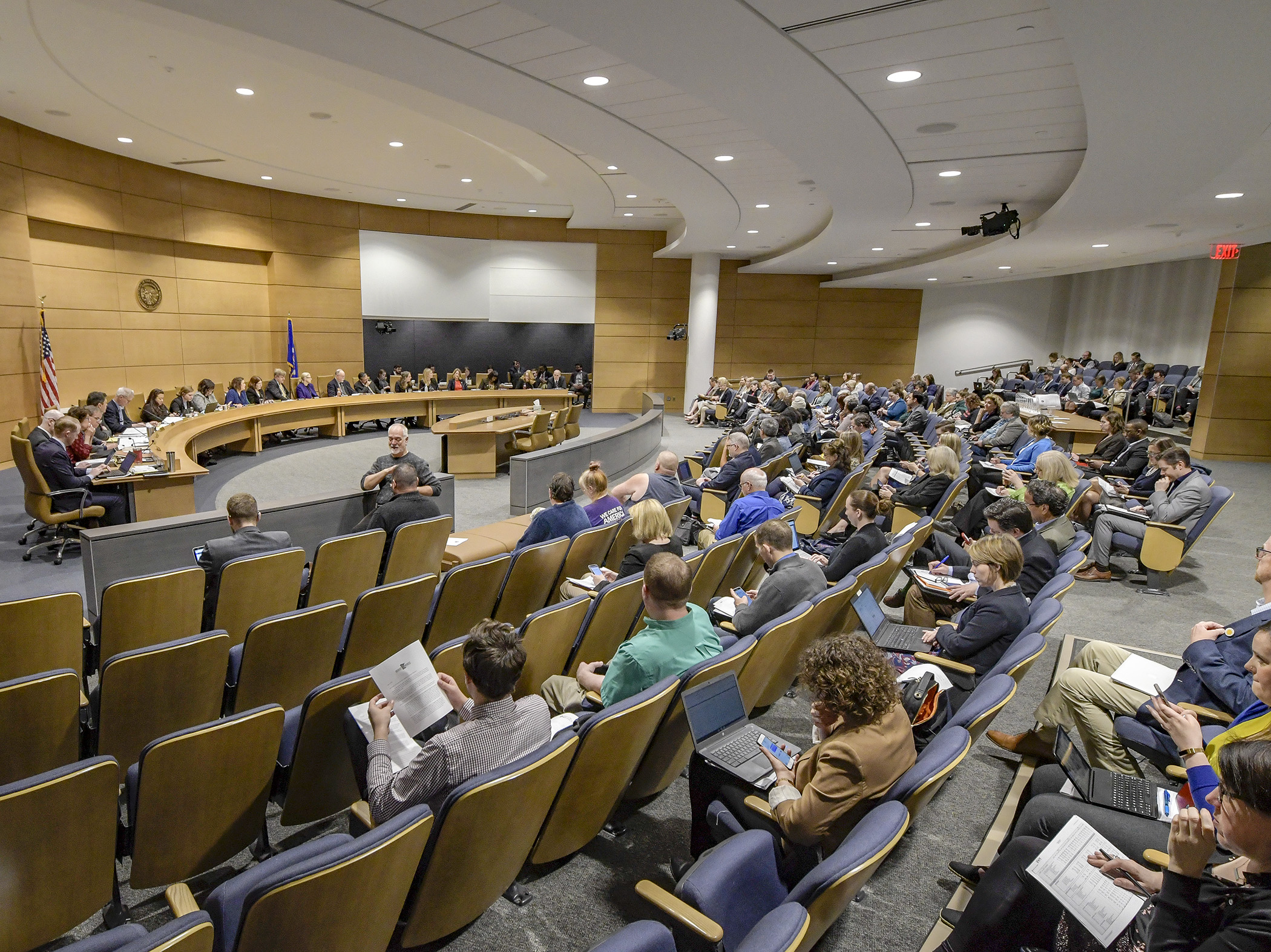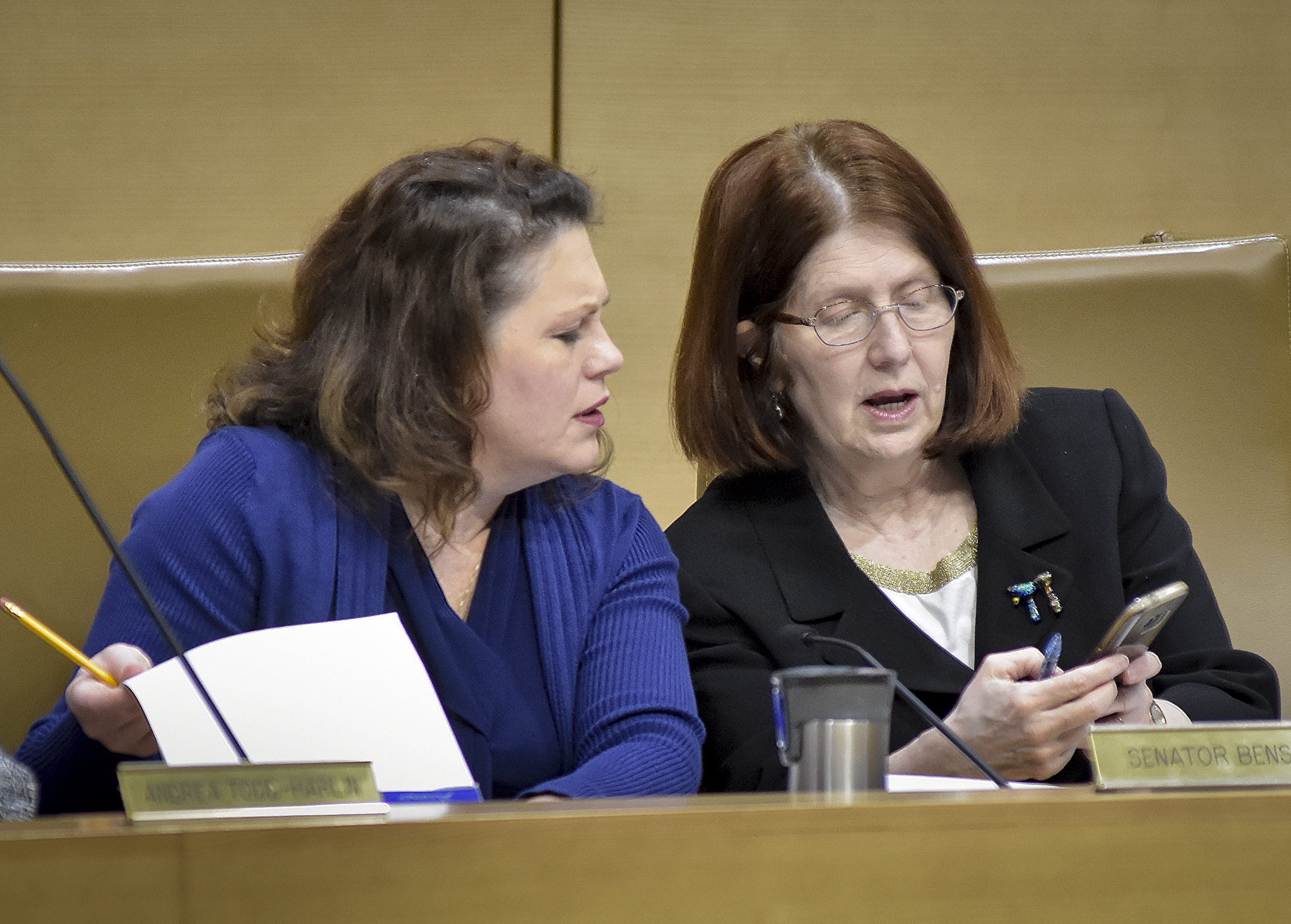Vast differences between House and Senate HHS omnibus proposals

The Health and Human Services Conference Committee began its work Friday with polite skepticism and extremely cautious optimism. But massive differences between Senate and House funding proposals will require extensive discussion over the next 10 days.
These differences largely stem from the House and Senate’s fundamental approaches to the omnibus health and human services finance bill, HF2414.
The DFL House proposal – which aligns in many areas with Gov. Tim Walz’s proposed budget – increases spending to allow investments across a wide range of areas. In contrast, the Republican Senate bill focuses on sweeping changes intended to generate savings and limit ballooning costs.
These include the sunset of a 2 percent “Provider Tax” that supports the state’s Health Care Access Fund – which the House repeals, allowing for the continuation of a vital revenue source, said Rep. Tina Liebling (DFL-Rochester), who co-chairs the conference committee with Sen. Michelle Benson (R-Ham Lake).
Allowing the tax to sunset, while shifting support for key programs to the General Fund, would allow increased clarity and accountability regarding the government’s funding decisions, Benson said.
 Sen. Michelle Benson and Rep. Tina Liebling confer before the first meeting of the HHS conference committee May 3. Liebling and Benson chair their body’s respective finance division or committee. Photo by Andrew VonBank
Sen. Michelle Benson and Rep. Tina Liebling confer before the first meeting of the HHS conference committee May 3. Liebling and Benson chair their body’s respective finance division or committee. Photo by Andrew VonBankRepublicans have also hailed the sunset as necessary to prevent costs from being passed down to vulnerable consumers.
However, turning the Senate’s cuts into savings may not be as easy as it appears on the spreadsheet, as more than half of those could not be realized, Human Services Commissioner Tony Lourey said.
Proposed cuts would leave Minnesota shy of the spending levels needed to receive federal funds and cause federal compliancy problems, while a 10 percent reduction in funding for central office operations – totaling about $40 million over the biennium – would force the department to start cutting services, he said.
“It’s really hard to sit and start to try to negotiate … the first thing has to be, you bring forward a package that actually balances,” he said. “The Legislature would have to tell us what they didn’t want us to do anymore.”
Health Commissioner Jan Malcolm also urged full operational funding, needed to keep up with inflation, maintain oversight, and manage the increased responsibilities tied to other provisions in the omnibus health and human services finance bill, like the creation and implementation of a licensing system for assisted living facilities.
Benson expressed concern regarding the sustainability of House provisions including the governor’s OneCare Minnesota proposals – which include a prescription drug benefit key to the House’s plan to reduce drug costs via increased state buying power – and a 20 percent direct premium discount for Minnesotans purchasing health insurance through private plans on the individual market.
[MORE - Watch the hearing]
Areas of agreement, or near-agreement, include:
- funding for the state’s tobacco Quitline and policy provisions that would limit indoor vaping;
- increased funds for the Office of Medical Cannabis;
- funding for a state-run suicide prevention hotline; and
- increased staffing for the Office of Ombudsman for Long-Term Care.
There are also notable areas of overlap regarding the licensure of pharmacy benefits managers and a comprehensive response to the state’s opioid epidemic, though these provisions are traveling through the Legislature separately and will likely receive detailed discussion in other conference committees.
Areas where differences remain include:
- the Senate’s repeal of the basic sliding fee child care assistance grants, proposed redesign of the state’s child care assistance, and development of a new child-care regulatory system;
- a House measure that would raise the legal age for purchasing tobacco products to 21;
- operational increases for the Health and Human Services departments and money for systems improvements – backed by the House, but not the Senate, which proposes to cut Department of Human Services funding back to 2016 levels;
- a House provision that would increase MFIP cash grants by $100 a month;
- a House ban on conversion therapy;
- Senate provisions that would reduce TEFRA fees for parents by 90 percent, then eliminate them – which contrasts with a more modest House proposal;
- the Senate’s proposed elimination of MA dental and vision coverage for adults; and
- a Senate provision calling for the Health Department to examine federally approved alternatives to MNsure.
The committee is scheduled to meet again Monday at 9 a.m., said Liebling, who called for an aggressive meeting schedule allowing the committee to complete its work in a timely manner. Legislative leaders want conference committees to finish their work by May 13.
Benson expressed her willingness to work with Liebling on this, but expressed concern about the House leadership’s decision to stick strictly to rules requiring the gavel to rotate every calendar day (skipping Sundays), as opposed to letting the co-chairs work out decisions independently.
Related Articles
Search Session Daily
Advanced Search OptionsPriority Dailies
Ways and Means Committee OKs proposed $512 million supplemental budget on party-line vote
By Mike Cook Meeting more needs or fiscal irresponsibility is one way to sum up the differences among the two parties on a supplemental spending package a year after a $72 billion state budg...
Meeting more needs or fiscal irresponsibility is one way to sum up the differences among the two parties on a supplemental spending package a year after a $72 billion state budg...
Minnesota’s projected budget surplus balloons to $3.7 billion, but fiscal pressure still looms
By Rob Hubbard Just as Minnesota has experienced a warmer winter than usual, so has the state’s budget outlook warmed over the past few months.
On Thursday, Minnesota Management and Budget...
Just as Minnesota has experienced a warmer winter than usual, so has the state’s budget outlook warmed over the past few months.
On Thursday, Minnesota Management and Budget...